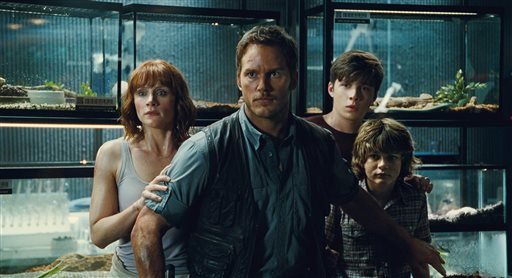Madison Pastrick | Layout Editor & Ad Manager
09/12/19
Stephen King’s literary masterpiece has made it to the big screen once again, as everybody’s least favorite clown, Pennywise, returns to wreak havoc on the poor children of Derry, Maine in It Chapter Two. Picking up 27 years after It (2017), this movie concludes the story of how seven children overcome their wildest fears, team up to kill a supernatural clown and save the day.
Since this movie is not as much a sequel as a continuation of Stephen King’s 1986 horror novel, I would highly recommend waiting to see this movie if you have not yet watched It (2017), the 1990 miniseries or read the book. Despite the many flashbacks and references to the 2017 movie, there is still way too much to catch up on for this movie to make any sense.
Given that 27 years have passed, the main characters are all grown up, at least physically, and most have left Derry and their memories of the killer clown behind them. Mike (Isaiah Mustafa) is the only character that has decided to stay and devote himself to finding a way to defeat It once and for all. Once it has become evident that Pennywise is on the move again, Mike calls the gang to return to Derry to fulfill their promise and finish what they started as preteens in 1960.
Right from the start, this movie reminds audiences that the small town of Derry has bigger problems than a child-eating, killer-clown, like abusive parents and bullies with daddy-issues. Just to give you an idea, the opening scene features a hate crime in which a gay couple is beaten and practically left for dead, until Pennywise finishes the job for them.
Though I appreciate the representation of more than a few gay characters in this film, the opening scene felt a bit forced. I understand the intention for social commentary, however, the creature almost felt like an after-thought that the filmmakers decided to add at the last minute.
This sense of irony is present throughout the entire story. If you’ve seen the first chapter of this series, then you know that each of the main character’s lives are deeply troubled in one way or another, such as with Beverly’s abusive father, Eddie’s overprotective mother and Ben’s constant run-ins with the town bullies. Despite these distractions, the children put their plights aside to unite in order to stop the killer-clown that has been feasting on the children in Derry.
The only problem with this is that while they’re able to defeat an actual monster, they struggle to free themselves from the humans that have been making their lives a living hell for the past 27 years. This is Stephen King’s not-so-subtle way of saying that humans are the real monsters in life, and fear is the only thing getting in the way of people overcoming their biggest problems.
But on a lighter note, let’s get back to the clown. The CGI in this film is definitely a step up from the 1990 mini-series, and things get weird early on in the movie – like a child corpse’s head falling off, growing spider legs and crawling around trying to kill you kind of weird. Depending on what you can stomach, the movie gets really graphic toward the end as well, overstepping several boundaries when it comes to scenes similar to that of little Georgie’s death in chapter one. Not many horror movies have the guts to kill a child on screen, but director Andrés Muschietti seemed to have no problems with this. Not only were the child death scenes graphic, but they were quite traumatic as well, playing on the naiveties and innocence of kids.
This movie fits just about every subgenre of horror and is sure to scare no matter which gets you. Jump scares, gore, suspense and psychological disturbances are scattered all throughout the film – so much in fact that you start to become immune to it until the very end when they’re facing the monster head-on.
Luckily, to supplement the added horror, there is also a lot more comic relief in chapter two, particularly coming from the grown-up characters of Richie (Bill Hader), and Eddie (James Ransone), who show off the preserved innocence of the group with well-timed “your mom” jokes and one-liners.
At 2 hours and 50 minutes, the movie does slow down toward the middle, especially if you’re already caught up on what happened in Chapter One. The ending is probably the most satisfying part of the movie, allowing audiences to finally take that breath of relief that they’ve been holding in since they stepped inside the theater.
Despite some of the movie’s painfully exaggerated portrayals of problems within society, the overall message of the film provides a satisfying ending that emphasizes the importance of overcoming your fears, the trials of growing up and how much stronger people become when they work together. Though you may not leave the theater with the warm, fuzzy feeling that these themes typically generate, the movie is sure to leave an impact that will stay with you, at least throughout the night.



